SHRI BADRINATH TEMPLE UTTARAKHAND
admin, 6 months ago, 6 min read, 165 Views
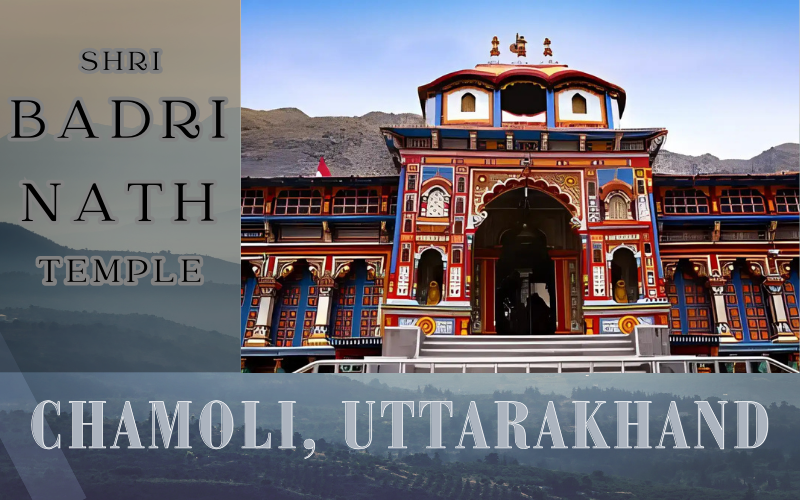
History of Shri Badrinath Temple Uttarakhand
The magnificent Badrinath Temple, also called Badrinarayan Temple or Badri Vishal Chard ham Temple, is tucked away in Uttarakhand’s Chamoli District in the middle of the Himalayas. The sacred place is open for pilgrims from May to November and attracts a lot of visitors from all across India because of its natural beauty. Situated in the Garhwal hills and encircled by the Alakananda River and the snow-capped Himalayas, Shri Badrinath Dham is a revered Chard ham pilgrimage site that holds great significance for Hindus. Nestled between the Nar and Narayan Mountain ranges, this town has a rich history and is shaded by Nilkantha Peak. This pilgrimage destination is thought to have been founded in the ninth century by Adi Shankryachakra.
One of the 108 Divyadesam (holy locations) for devotees of Vishnu is Badrinath Temple. Together with three other designated locations, it is thought to be devoted to Lord Vishnu and constitutes one of the holiest Chardhams in Hinduism.
A one-meter-tall black stone idol of Lord Vishnu, thought to be one of the eight Swayam Vyakta Kshetra, can be found at the Badrinath temple. With its beautiful entrance painted in vivid hues, the Lord Vishnu shrine adds to the temple’s magnificence. Additionally, this temple features a Tapta Kund, which is well-known for its healing properties. In order to attend the Badri Kedar festival and the Mata Murti ka Mela, visitors need to plan their trip for June or September.
Legends and Mythology of Shri Badrinath Temple in the Himalayas

There are many fascinating tales surrounding the ancient history of Badrinath Temple. It is thought that Lord Vishnu meditated for the Adobe for thousands of years before coming to bless his followers by taking the shape of Lord Badrinath. In order to shield Lord Vishnu from the harsh weather, Goddess Laxmi also manifested as a berry (badri) tree. Badri Dham, sometimes called Badrikashram, is a place to witness the devotion of Goddess Laxmi.
According to historical accounts, the temple has been there since 500 BCE. Another ancient story claims that Lord Shiva has a significant role in Badrinath Dham. It is thought that Lord Shiva is present in the form of a natural hot spring called Tapta Kund, where pilgrims come to take a dip.
In the Epic Mahabharata, the Pandava made a stop at the Badrinath temple on their way to the afterlife, according to several mythologies. It is also thought that the well-known philosopher Adi Shankaracharya lay the basis for the current temple when he discovered the black-stone statue of Lord Badrinarayan in the Alaknanda River and set it up in the cave close to the Tapta Kund, which is connected to Lord Shiva.
A History Tapestry of Shri Badrinath Dham Temple: Unraveling the Past
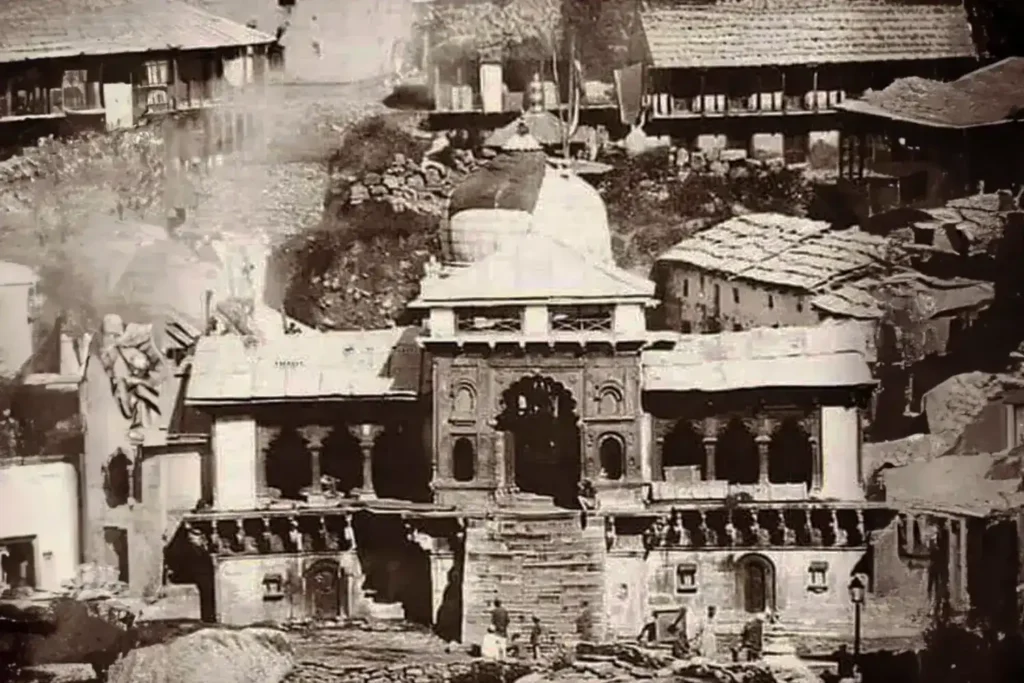
The history of the Badrinath temple is woven together by the evolution of building and spiritual devotion. Although the temple’s precise beginnings are uncertain, it is thought to have been a place of worship for over a millennium. The history of the Shri Badrinath temple dates back to the Vedic Era. It can be found in Puranic texts.
However, Adi Shankaracharya, an Indian vedic teacher and philosopher, constructed the reformed avatar of Kedarnath temple in the eighth century. The Char Dhams, the four principal Hindu shrines, are among the several other Hindu pilgrimage places that Adi Shakaracharya is credited with building and revitalizing.
Adi Shankaracharya had a significant role in the temple’s renaissance in the ninth century CE. He is credited with writing the Badrinath Temple’s existing history and rebuilding the temple. Throughout the decades, Badrinath Dham has undergone numerous restorations, primarily during the period when the Garwhal monarchs ruled. The murti was relocated to the current temple by the ruler of Garhwal in the 17th century. Later rulers and devotees have contributed to the temple’s maintenance and repair, guaranteeing its place as a key Badrinath Chardham Yatra site.
Architecture of Shri Badrinath Temple
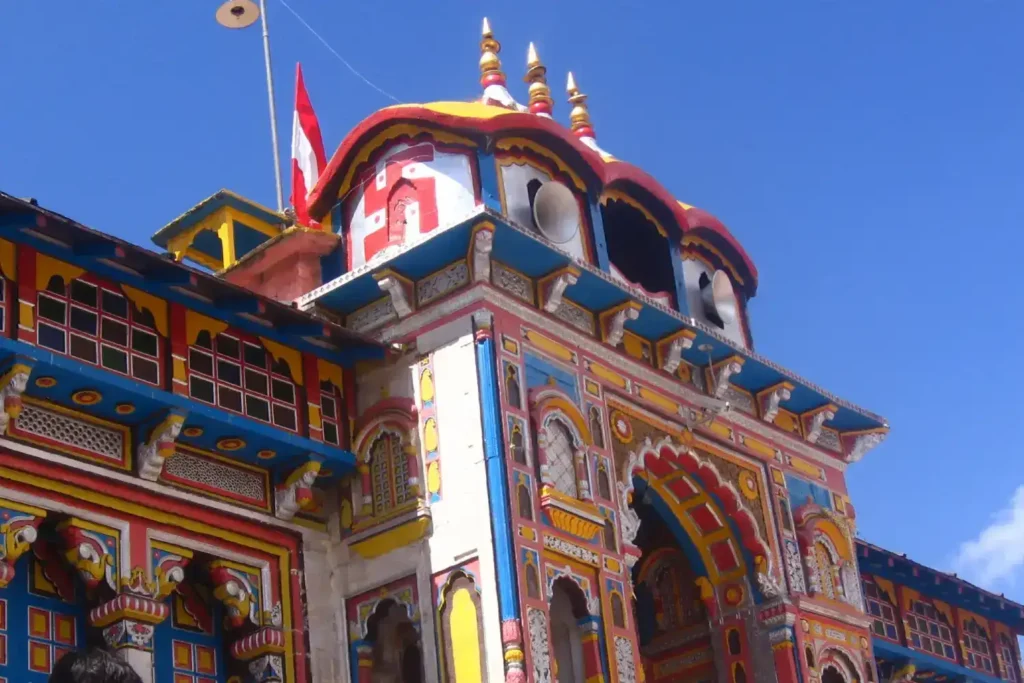
The traditional Garhwali style, which is distinguished by its use of wood and stone, is reflected in the Shri Badrinath temple. The conical sanctuary, arched windows, and elaborately carved facade display the period’s architectural finishes. The temple, which is more than 3,300 meters high, has a distinctive facade that is decorated with vivid colors and pictures of Buddhist Viharas that are not easily forgotten. Its location in the Himalayas, where the Badrinath Temple stands with snow-capped peaks creating an enduring backdrop, adds to the majesty.
Singhdwar, the Badrinath temple’s main entrance, is a vivid and impressive sight. The temple is roughly fifty feet tall with a modest dome on top. Gold gilt is used to adorn the ceiling. “Garbha Griha,” “Darshan Mandap,” and “Saba Mandap” are the three sections that make up the Badrinath temple. The idol of the bird guard, Lord Badrinarayan’s vehicle, is seated at the Badrinath Temple gate, folded-handed and in prayer.
Interesting Facts About Shri Badrinath Temple
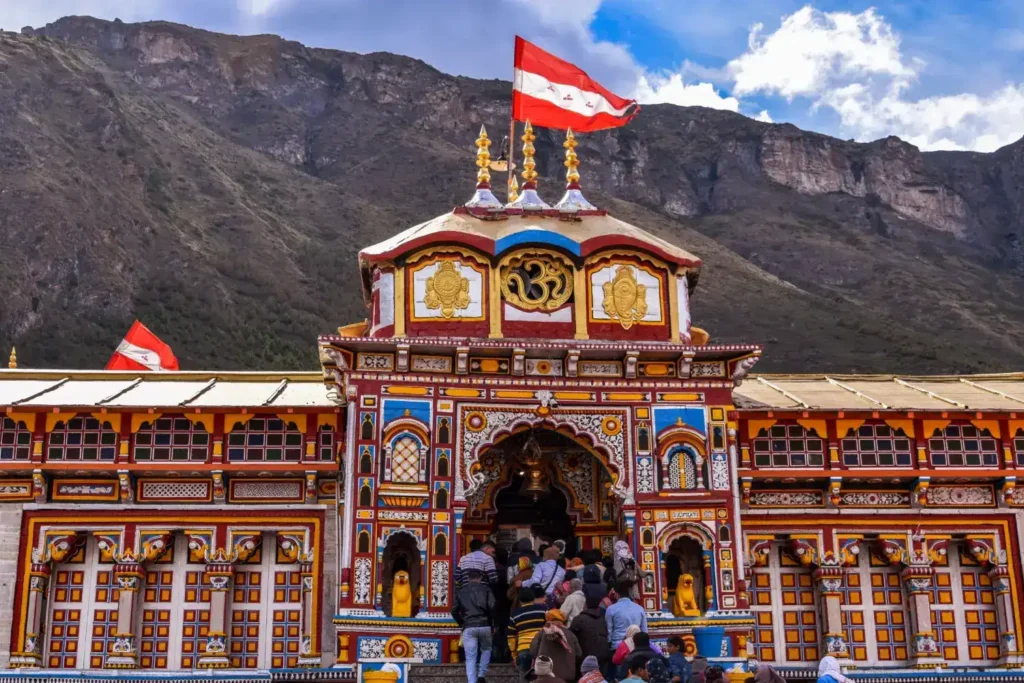
There are many fascinating facts about Badrinath Temple that add to its allure and mysticism. Because of the severe winter conditions, the temples are closed for six months each year. During this severe winter, the idol of Lord Badrinarayan is moved from Joshimath’s Narasimha Temple to ensure constant worship. Before visiting the shrine, devotees take a soak in the Tapta Kund, a naturally occurring hot spring at the temple. This tradition is thought to be committed to worship as a means of cleansing.
The management and growth of the Badrinath Temple were assumed by the Garwhal king in the 17th century. However, the 1803 Himalayan earthquake caused significant damage to the temple. The Jaipur King eventually rebuilt it, and it was completed prior to the outbreak of World War One.
Garwhal was divided into two parts, and the Badrinath temple was taken over by the British in the 19th century. Nonetheless, the administrative council of the temple continued to be headed by the Garhwal King.
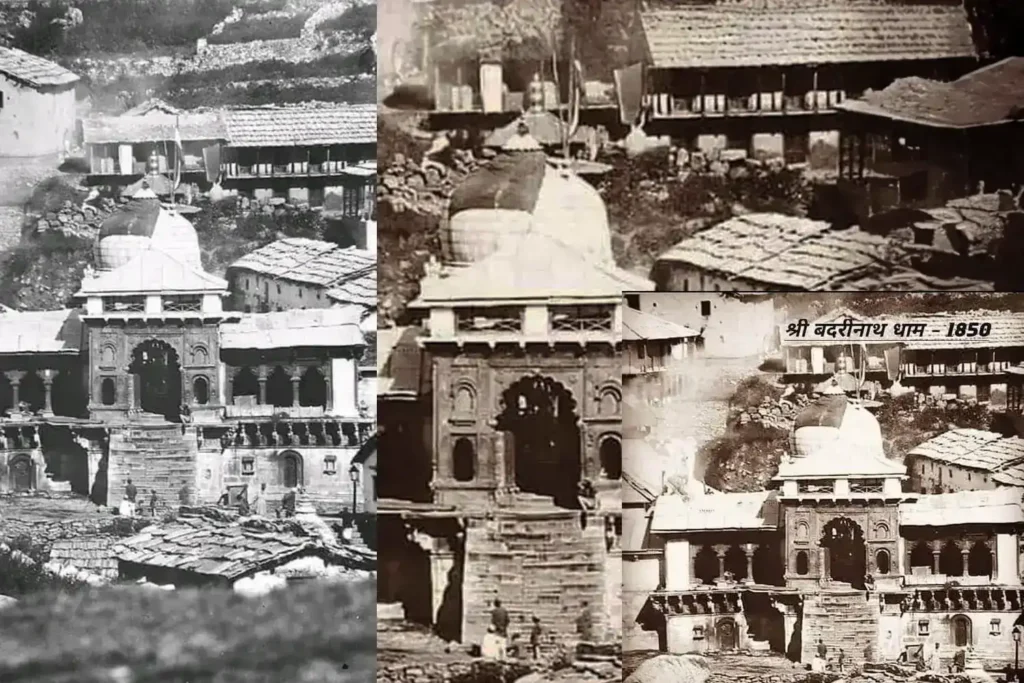
The history of Badrinath Temple is intertwined with stories of devotion, architecture, and mythology. A crucial component of Uttarakhand’s Chardham, Badrinath Dham has endured for millennia due to its religious significance and historical advancements. With contributions from numerous followers and kings, including the Jaipur ruler who rebuilt the Temple following the earthquake, the lengthy history of the Shri Badrinath Temple explains how it was initially utilized as a site of devotion more than a thousand years ago. Because to its magnificent architecture, which features elaborate decorations and a colorful facade, Shri Badrinath Temple is a must-see destination during the Badrinath Dham Yatra.
Mythology and legends, which add to the temple’s mystique through stories of Lord Vishnu’s meditation and the Pandavas’ trek, further accentuate its splendor. The idol’s yearly movement and the therapeutic properties of the Tapta Kund are fascinating aspects that contribute to the temple’s distinct appeal. The Badrinath temple continues to be a source of spiritual illumination, drawing pilgrims from all over the world to take in its serene splendor and extensive history.
Conclusion
In Hinduism, the Shri Badrinath Temple is a revered symbol of devotion, faith, and spiritual enlightenment. This holy shrine of Lord Vishnu, which is tucked away in the Garhwal Himalayas, is a crucial component of Uttarakhand’s Chhota Char Dham circuit and the Char Dham Yatra.
Devotees can receive heavenly blessings and achieve moksha (freedom) at the temple because of its rich mythical significance, which includes connections to Adi Shankaracharya. A profoundly peaceful and soul-enriching experience is produced by the tranquility of the Alaknanda River and the natural splendor around Badrinath.
Related FAQs
Is it safe to travel to Badrinath?
Yes, traveling to Badrinath is completely safe. Prior to visiting the location, however, you need take some elements into account. Due to the intense demand, reservations should be made in advance throughout the six-month-long Yatra season. Because of the heavy rains, you should stay away from the monsoon season.
Which Season Is Best for Traveling to Badrinath?
The temple is open from May through October, despite the fact that the Badrinath pilgrimage is seasonal. April and May are the ideal months to visit Badrinath because of the pleasant weather, which averages about 18 degrees Celsius. The temperature at Badrinath begins to plummet as the monsoon goes on, bringing with it cold winds and even flurries.
Does Badrinath have access to ATMs?
Indeed, Badrinath’s main market is surrounded by a lot of ATMs. To prevent any last-minute problems, it is advised that travelers keep some cash on hand.
How far are Kedarnath and Badrinath from one another?
By road, Kedarnath and Badrinath are 218 kilometers apart. In terms of aerial distance, though, it is only 41 km.
In Badrinath, what should I purchase?
In Badrinath, you should think about purchasing ancient coins, regional pulses, religious books, puja goods, vibrant beads, bracelets, show pieces, and aarti booklets.
